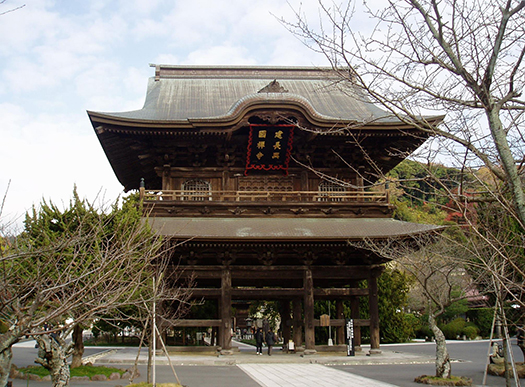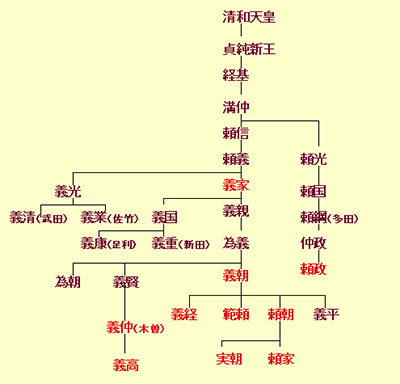

タイムマシンができて日本史で時間旅行ができるようになったら、
やはり平安末期の源氏による権力奪取の瞬間がもっとも刺激的ではないか。
この時代、日本の歴史人口は757万人という推定値がある。
この数字を元に考えると戦争に動員されていた民は相当根こそぎ。
当時の社会を考えれば、農民達はその土地の領主の所有物だっただろう。
こういう動乱期に現代の人間のように「我関せず」という立場はあり得ないし、
実際に農村村落からは戦闘要員として大量動員されたことは疑いない。
奥州藤原氏を潰滅させるのに、頼朝は284,000の軍勢を率いたとされている。
1189年の7月-8月にかけての制圧行動だけれど、
農作業の繁忙期を避けての軍事行動にしても巨大な人口移動。
兵站を考えると気絶しそうだが、もっとも原始的「略奪」兵站だっただろう。
人数の正確性は特定しようもないけれど、平泉政権側にして見れば
まさに存亡の危機であり人口の相当規模が動員されたことはわかる。
一説では20,000が国見峠防衛に当たったとされている。
宮城県側から南下して福島県の国見峠付近で関東軍を迎撃したが、
まさに国土防衛の総力戦。当時の奥羽人口は不明だが現代東北は10%弱比率。
当時の開拓状況を考慮すれば、多めに見て総人口の5%程度ではないか。
奥羽人口を仮に40万人とすれば20,000の総力戦動員の蓋然性は高い。
一方で頼朝側も乾坤一擲の大勝負であり、家系の5-6代前くらいの
頼義・義家の代での苦渋の体験は強く「根に持っていた」だろう。
絶対に藤原氏の息の根を止める強い意志を持って遠征計画を実行した。
そう考えると284,000という人数も蓋然性はあるのかも知れない。
こちらも当時の関東全域の人口推定を奥羽の3倍と見て120万人。
征服側心理としては「一所懸命」思想のリアリズム、
「切り取り次第」という強烈な芳香を放つモチベーションから
農家の次男三男層は目をランランと輝かせ略奪の限りを尽くしたのではないか。
怖ろしい現実だけれど、封建の基盤である一所懸命の考え方は
戦後日本の「所得倍増」計画にも似て関東の民の欲望全開の蠱惑的軍政。
暴力革命家・頼朝は関東独立開墾地主たちのホンネを鼓舞したのだ。
津波のような欲望が奥羽を覆ったと言えるのだろう。
ちなみにこの戦役の「大義名分」を巡って朝廷の方針に頼朝は従わなかった。
戦にあっての将軍は帝の命にも服しないと言い放ったと言われる。
この一所懸命思想での成功体験、奥州侵略の大成功がその後の鎌倉幕府、
ひいては「武士道」の基本骨格を作ったのではないだろうか。
頼朝の政権掌握が成功し、武家政権が本格的に成立したのには
平氏を滅ぼした以上に、平泉政権の根絶やし征服が大きかったと思うのです。
武士の原則「御恩と奉公」「武士道」はこうして強烈な実体を持った。
源平の争乱という武力抗争が展開されて朝廷側としては
旧来の藤原氏などの貴族間の権力闘争の一変形とみていただろうと思う。
局地戦に勝った側に適当に事後的に「院宣」なりを渡して
「勝てば官軍」という政治的認証を与えその勢力に乗っかればいいと
旧来的政治力学の存続が可能だと考えていたと思われる。
そういう思考が根底から「革命」されてしまったということなのでしょう。
English version⬇
[Isshokennmei= “income doubling” invasion plan Kenchoji Kamakura-2]
Once you have a time machine and you can travel back in time in Japanese history,
After all, the moment of power seizure by Genji at the end of the Heian period is probably the most dramatic.
At this time, the historical population of Japan is estimated to be 7.57 million.
Based on this number, the people who were mobilized in the war are quite uprooted.
Given the society of the time, the peasants would have been the property of the landowner.
In such a turbulent period, there can be no position of “not being involved” like modern human beings.
There is no doubt that they were actually mass mobilized as combat personnel from rural villages.
Yoritomo is said to have led 284,000 troops to annihilate Mr. Fujiwara Oshu.
It was a suppression action from July to August 1189,
Huge population migration even for military operations avoiding the busy season of agricultural work.
It seems to be fainting considering the logistics, but it was probably the most primitive “predatory” logistics.
The accuracy of the number of people cannot be specified, but from the perspective of the Hiraizumi administration,
It turns out that it is a crisis of survival and a considerable size of the population has been mobilized.
According to one theory, 20,000 were involved in the defense of the Kunimi Pass.
I went south from the Miyagi prefecture side and intercepted the Kwantung Army near the Kunimi pass in Fukushima prefecture.
It’s a total war of national defense. The population of Ou at that time is unknown, but the ratio of modern Tohoku is less than 10%.
Considering the development situation at that time, it may be about 5% of the total population.
If the Ou population is 400,000, it is highly probable that 20,000 total wars will be mobilized.
On the other hand, Yoritomo’s side is also a big game of Inui, about 5-6 generations before the family line.
The painful experience of Yoriyoshi and Yoshiie would have been strongly “held in the roots”.
He carried out the expedition plan with a strong will to hold Mr. Fujiwara’s breath.
Considering that, the number of 284,000 may be probable.
This is also 1.2 million people, considering that the population of the entire Kanto region at that time is three times that of Ou.
As for the psychology of the conqueror, the realism of the “hard” idea,
From the motivation to give off a strong fragrance “as soon as it is cut”
The farmer’s second son and third son may have shined their eyes and looted as much as possible.
It ’s a scary reality, but the hard way of thinking that is the basis of feudalism is
Similar to Japan’s “income doubling plan” after the war, it is a seductive military administration that fully opens the desires of the people of the Kanto region.
Yoritomo, a violent revolutionary, inspired the Honne of the Kanto independent landowners.
It can be said that tsunami-like desires covered Ou.
By the way, Yoritomo did not follow the policy of the imperial court over the “great cause” of this campaign.
It is said that the shogun in the war said he would not submit to the life of the emperor.
The success experience with this hard thought, the great success of the invasion of Oshu was the subsequent Kamakura Shogunate,
By extension, I think he created the basic skeleton of “Bushido”.
The success of Yoritomo’s administration and the establishment of the samurai government in earnest
I think that the eradication and conquest of the Hiraizumi administration was greater than the destruction of the Taira clan.
The samurai principles of “gratitude and service” and “bushido” thus had a strong substance.
As an armed conflict called the Genpei War, the imperial court side
I think it was a variant of the power struggle between aristocrats such as the old Fujiwara clan.
After the fact, give the “institute” to the side that won the local war.
You should give the political certification that “If you win, the government army” and get on that power.
It seems that he thought that the traditional political dynamics could be maintained.
Perhaps that kind of thinking has been “revolutionized” from the ground up.
Posted on 12月 17th, 2021 by 三木 奎吾
Filed under: 住宅マーケティング, 日本社会・文化研究, 歴史探訪







コメントを投稿
「※誹謗中傷や、悪意のある書き込み、営利目的などのコメントを防ぐために、投稿された全てのコメントは一時的に保留されますのでご了承ください。」
You must be logged in to post a comment.